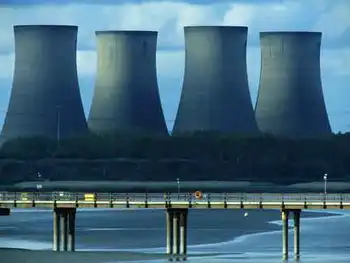Almost half of UK reactors shut down
By London Evening Standard
NFPA 70e Training
Our customized live online or in‑person group training can be delivered to your staff at your location.

- Live Online
- 6 hours Instructor-led
- Group Training Available
British Energy's decision to close seven of its 16 reactors has also raised concerns about the reliability of the country's nuclear plants.
Three of the plants have been closed due to faults, three are being inspected for potential faults and one is undergoing routine maintenance.
None of the problems involves the nuclear reactor itself.
The closures come as the Government pushes for a new wave of nuclear stations, to replace aging plants which produce up to 20 per cent of the country's electricity.
Experts say that unless all the plants are quickly back in operation, industry and domestic users could face power cuts as well as higher electricity bills.
Ian Fells, a professor of energy conversion at Newcastle University, said: "It is disturbing. We are going to have to rely on it being a warm winter.
"It's not just the loss of electricity, it's the loss to industry when everything fails. It is quite a serious matter."
British Energy - part-owned by the Government - closed the two reactors at its Hartlepool plant after a maintenance inspection flagged up a problem with a giant boiler in one.
Two reactors at a sister plant, Heysham 1 in Lancashire, were taken out of service as a precaution.
The power station at Torness in East Lothian, which also has two reactors, has been shut due to electrical faults, while one of the two reactors at Dungeness B in Kent is closed for routine maintenance.
Reactors typically produce enough electricity each to heat and light two million homes. Heysham 1 can power three cities the size of Liverpool.
British Energy, whose shares have fallen more than eight per cent in the wake of the closures, refused to speculate on when all the plants will be running again.
The trade body, the Nuclear Industry Association, stressed that the faults related to production rather than safety, and were British Energy - part-owned by the Government - closed the two reactors at its Hartlepool plant after a maintenance inspection flagged up a problem with a giant boiler in one.
Two reactors at a sister plant, Heysham 1 in Lancashire, were taken out of service as a precaution.
The power station at Torness in East Lothian, which also has two reactors, has been shut due to electrical faults, while one of the two reactors at Dungeness B in Kent is closed for routine maintenance.
Reactors typically produce enough electricity each to heat and light two million homes. Heysham 1 can power three cities the size of Liverpool.
British Energy, whose shares have fallen more than eight per cent in the wake of the closures, refused to speculate on when all the plants will be running again.
The trade body, the Nuclear Industry Association, stressed that the faults related to production rather than safety, and were brought on by wear and tear in aging reactors built in different styles. Some are more than 35 years old.
NIA spokesman John McNamara, said: "British Energy's engineering and maintenance standards are world-class, but they have a collection of very disparate prototypes of reactors.
"That presents them with a huge engineering problem.
"In our opinion there should be greater focus on building a new generation of nuclear stations to a standard design."
Mr McNamara added: "I think there is capacity in the system to ensure there isn't any effect on supply, but it is getting tighter."
Former environment minister Michael Meacher, a long-time opponent of civil nuclear power, said: "I think it is extremely worrying that one of the major sources of electricity is half down at this time. One needs certainty and the nuclear industry doesn't provide it."
It is thought the problem in Hartlepool relates to the corrosion of steel rods used to strengthen the concrete lid of a high-pressure boiler.
The boilers are effectively giant kettles which use the heat from the nuclear reaction to create steam which turns electricity-producing turbines.











